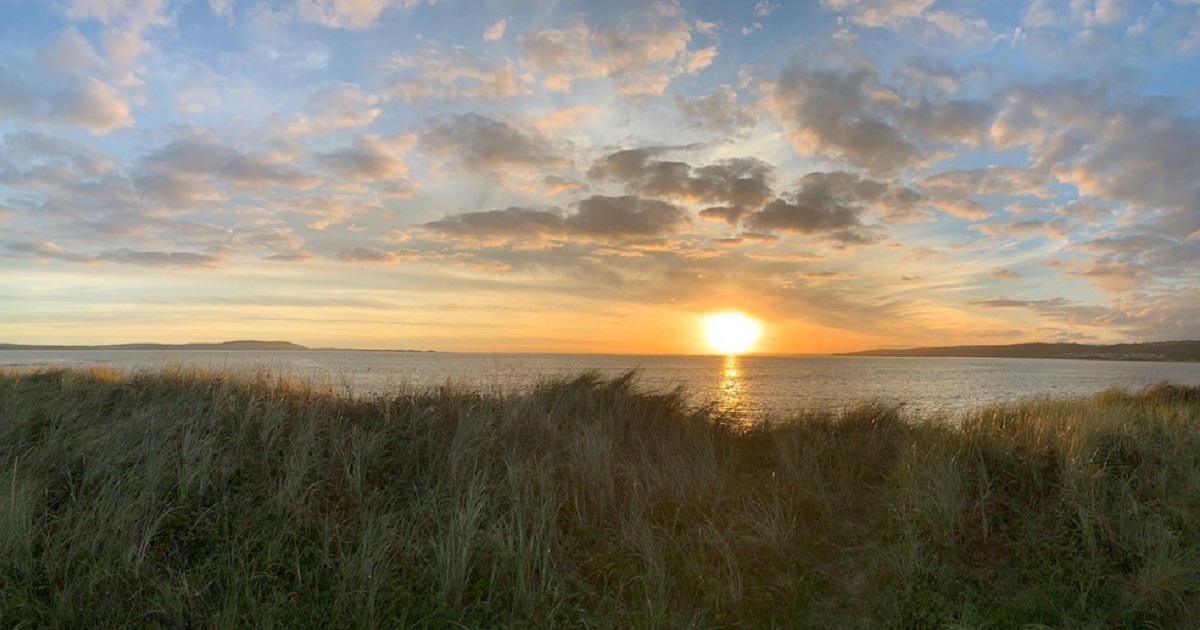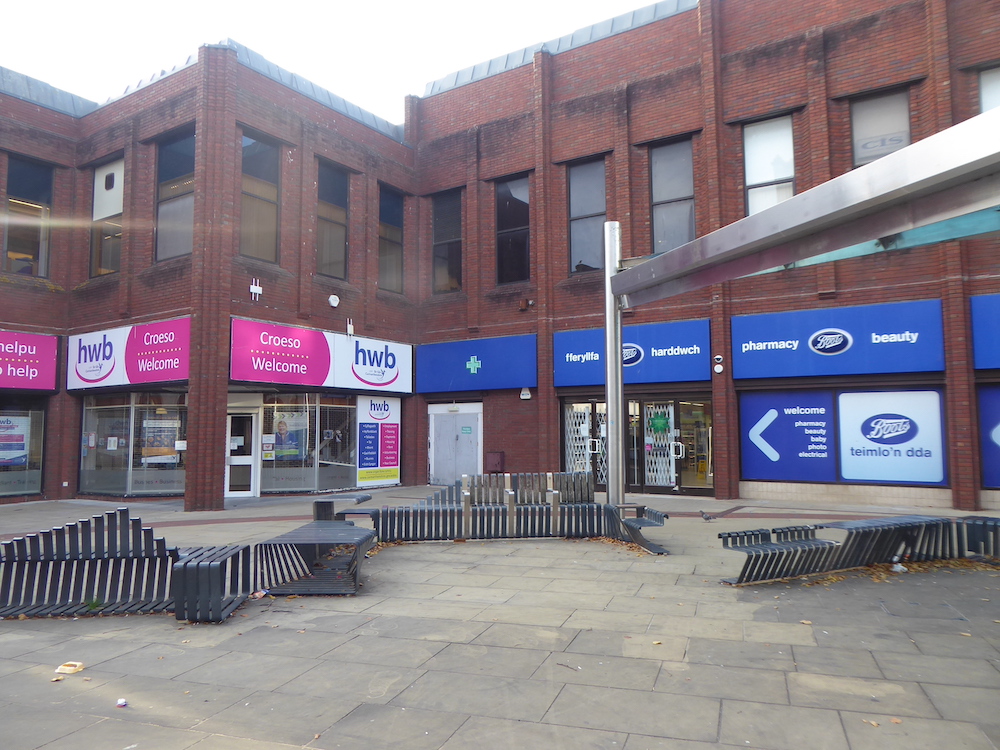Letter from Llanelli

Ant Heald
“What’s the catch?”
The question came out of, then drifted across the blue towards Whiteford Lighthouse as we gazed across the mirror-flat waters of the Loughor estuary on a beautiful crisp cloudless morning.
I was just finishing my beach dog walk and marvelling that I actually live here, and that this glorious ever-changing tidal vista is one I can see every day. My interlocutor was an English house-hunter, drawn westwards by holiday memories
He was on his way to Pembrokeshire, but had detoured to Llanelli, lured by properties that fitted his needs, but seemed implausibly cheap. Hence his question as we stood looking at a sea view that compares with any ‘honeypot’ resort.
So, what is the catch?
I’m uncomfortable, not being a native of Llanelli, in offering an unflattering impression of my adopted home, but I had to answer honestly that the ‘catch’ is probably the town itself.
You can’t gloss over the fact that large areas of Llanelli are among the most deprived in Wales, and that the once bustling town centre is now an incoherent mess of partial and piecemeal redevelopments with no obvious focal point. Many shops lie empty and abandoned.

Tinopolis
Two of the remaining chain stores closed their doors recently, leaving only Boots of the traditional big names. Many locals will tell you that’s only survived to serve the ‘druggies’ who congregate in the square outside.
And if you think I’m making the place sound rough, I can’t compete with some of those born and bred here. A random glance at a community Facebook group pictures a crowded street scene from 1981, the year Duport Steelworks, then the town’s biggest employer, closed down.
The comments include: ‘the beginning of the end’; ‘our town is a disgrace’; ‘look at it now! druggie bum capital’.
The reasons for this decline are familiar: the long withdrawal of heavy industry that gave Llanelli the nickname ’Tinopolis’, followed at the end of the 80’s by the body-blow of the out-of-town retail park at Trostre siphoning much of what little wealth remained out of the town itself as the major stores relocated.
There’s a strong feeling that since then, the neglect of a council seen as paying more attention to Carmarthen where the local authority is based, and the shift to online shopping, have dealt fatal blows to the legendary town of Scarlets rugby and ‘Sospan Fach’.
I acknowledge the real sorrow and anger of people who look back across a lifetime of living in Llanelli and dwell on what has been lost. But I think this pessimism, if not entirely misplaced, need not be the only response.
The Trostre tinplate works celebrated seventy years of continuous production this year with a confidence-boosting £6 million investment programme. ‘Tinopolis’ is not quite dead, then, and has also given its name to an international media production and distribution company headquartered in the town centre with a diverse portfolio from Question Time to Ru Paul’s Drag Race and crossover Welsh hits such as Y Gwyllt / Hinterland.
Tinopolis
Viewers of S4C staples produced by Tinopolis such as Prynhawn Da and Heno daily look through the studio windows across the street to Avó café bar, one of many popular and busy eateries in the town, from the trendy (and dog-friendly!) Hwyl to the enterprising Marzano’s that has branched out with an offshoot serving the nearby coastal park.
Despite the retreat of the big names, there are many thriving locally owned businesses, such as On Your Bike, a pioneer in the electric cycle market, while Rowberry shoes and Solid Gold menswear among others, have been trading for decades, proving that business acumen combined with a personal stake in your community can weather any storm.
In the mid twentieth century Llanelli could boast of being the largest town with more than half its population speaking a Celtic language.
It might be less than a third now, but I hear more families with children speaking Welsh today than when I first knew Llanelli over three decades ago.
Heritage
I have always felt that Llanelli could make more of its distinctive cultural and linguistic heritage.
Many locals I speak to are unaware of Llanelli’s role as a key birthplace of the Welsh language movement, while the first Welsh medium state school was established in 1947 in Capel Sion schoolroom, now part of the Theatr Ffwrnes complex, which is home to the dynamic community arts and wellbeing enterprise People Speak Up that taps into the story-telling creativity of Llanelli folk across the generations.
The coastal strip around Llanelli is usually bypassed by those who don’t know it, but it is stunningly beautiful and shows what well-targeted funding coupled with imagination and ambition can achieve.
The Millennium Coastal Park project transformed a derelict post-industrial wasteland into miles of attractive walking and cycling routes and a haven for nature in just five years and under budget in the run up to the year 2000.
Potential
Llanelli has the people and potential to thrive again. The regular special events and market days coordinated by Ymlaen Llanelli every month or two see the town as thronged and vibrant as it was decades ago. The appetite is there. The challenge is to make that the norm.
Funding is being pumped into the ambitious Pentre Awel life-science and wellness village, and with vision and investment the ‘Transforming Tyisha’ project could turn one of Wales’s most deprived wards (where I happen to live) from a notorious, if unfairly maligned, neighbourhood into an attractive and sustainable community linking the town centre, its railway station, and the new development.
Coastline
Imaginative ways can also surely be found to make the leisure centre area, which will be redundant when Pentre Awel is built, into an attractive corridor from town into Sandy Water park and Festival Fields that have twice hosted the Eisteddfod where the Duport steelworks used to stand, integrating the town centre more securely with the precious resource of its coastline.
This summer, the North Dock which once shipped coal and metal across the globe was thronged with swimmers and paddle boarders — until it was choked with algae.
A petition has been launched to maintain it, but facilities are negligible in any case, so there is scope to create the kind of thriving waterside development that has revitalised other former ports.
Llanelli is a far better place than it’s often given credit for, and if we can build on its proud past while looking to the future, rather than over our shoulders, it can surely be great again.
And if someone asks, “What’s the catch?” We’ll be able to answer, “We are – a great catch. Ymlaen Llanelli!”
Support our Nation today
For the price of a cup of coffee a month you can help us create an independent, not-for-profit, national news service for the people of Wales, by the people of Wales.





I love this! The mix of understanding, honesty and optimism in this letter is heart warming. As a former mayoress of my beloved hometown, I struggle with what it has become but am hopeful for that the plans will have a positive impact on both the town and its people. So much so, that after some time away, I’m moving home. Because there’s nowhere quite like Llanelli and I miss it. Ymlaen Llanelli indeed!!
Thanks Natasha – I’m sure Llanelli will be better for having you back!
If I had my way I’d turn all the shops in Trostre retail park into industrial units. If Tesco want to stay up there, leave them to it. Pemberton in and of itself is a big enouh out of town retail park to serve Llanelli’s needs. The town centre needs a coherent redevelopment to preserve the Victorian heritage and remove the later carbuncles. We should open up the Lliedi and make it a feature with wide pedestrian avenues, open air market and outside seating. There’s a host of shops in Trostre that should be in town. We have ample parking… Read more »
Da iawn, Ymlaen Llanelli
A very positive piece on Llanelli which is great to see. But I do feel that the carping about the council is wrong as is the view that Carmarthen gets everything. In Carmarthen I hear the same thing in reverse. In my opinion what we have to remember is that since the deindustrialization we have faced since the 1970s industrial areas have been on the slide and there has been a significant reduction in money in the local economy. A long period of austerity and before that ‘efficiencies’ have again taken huge chunks out of the economy. There is only… Read more »